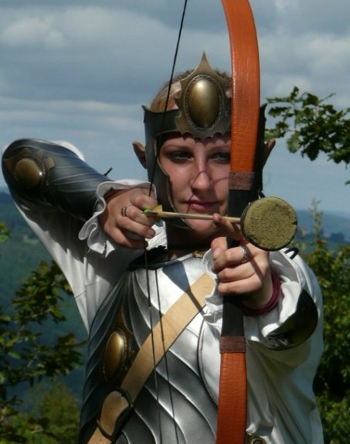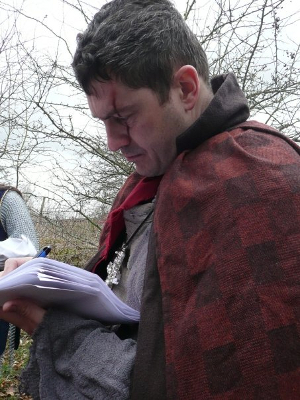Quick Links
- Login (existing users)
- Jeremiahs Journal
- Latest Battle Board
- What is Live Roleplaying?
- Larp Links
Search
Future Events
| The Enemy Within Thu 19 Feb - Sat 21 Feb |
| The Quest for Knowledge Thu 2 Apr - Mon 6 Apr |
| Torii Gates Thu 2 Jul - Sat 4 Jul |
Latest Updates
| How LARP Works |
 |
 |
 |
 HeroQuest is a player-versus-monster LARP system, as opposed to a player-versus-player (PVP) system. For us this means there are three groups of people involved on any larp event:
The referees will run a series of encounters, where in each one the monsters will be given appropriate costume, and briefed on their background, combat capabilities and a motivation/reason for the role. It is up to the players to decide how they interact with the encounter: you may wish to fight these monsters or you may decide that talking is a better alternative. LARP BattleboardIf the players decide to fight the monsters, once the fight has ended the referee will call a "time out". This is a temporary cessation to role-playing and a short time for players to talk normally with each other. During the time-out, the referee will speak with each player individually and go through:
This is known as a "battle board". At the end of the battleboard, all characters will be briefed on how injured they are (or whether they are dying). They then assume the positions their characters were in prior to the break, and "time in" is called. At this point, the players resume role-playing their characters. Why the Battle Board?
HeroQuest is a high-hit larp system. This allows those people who aren't superb trained fighters in real life to participate fully in the combat, to compensate for real-world limitations that your character might not have. "High hits" means you can take a number of blows that you didn't manage to parry, and continue fighting (subject to your character's abilities). Of course, if you ARE a kendo supremo then you'll still be able to enjoy the combat - the numbers of monsters and players means that everybody gets to be challenged in some way. The slight downside of a high hit system is that there's more for you to remember and process during a combat, but that's where the referee comes in to make things easy for you. They do the mental arithmetic, you do the fighting! RefereesOn each larp event, there are three types of referees in HeroQuest:
Numbers vary according to the type and scale of event being run; our 6-day Quest events tend to have more referees to help manage things, as do the multi-party Adventure Weekends.
|
||
| Last Updated on Sunday, 02 February 2014 19:38 |

 In low-hit systems, maybe one blow to your leg might immediately disable that limb, or just two blows to your body may render you unconscious.
In low-hit systems, maybe one blow to your leg might immediately disable that limb, or just two blows to your body may render you unconscious.